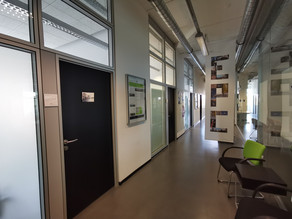A 02 - The Dortmund Wallring - no solution, no problem?!
To someone with only a hammer, every problem looks like a nail. Abraham Maslow
"A rule of thumb among planners* is that every effect has a side effect." (Schönwandt et al. 2013: 88)
Formerly a city wall, in the meantime a tree-covered promenade, today known as a six-lane race track around the Dortmund city center (and Mecca of the speeding and tuning scene) -the Dortmunder Wall continues to shape the cityscape and its function; at the same time, its form is constantly adapting to the current circumstances of the time.
Even today, the urban society debates how the Wall should look like in the future. Many stakeholders have different demands on this space. The adaptation to climate change and an emission-free city center, the promotion of bicycle and pedestrian traffic, the improvement of the quality of stay, opportunities for urban design and future needs of the city center and surrounding areas, e.g. with regard to logistics and accessibility, are at the center of the discussions today.
It is therefore not surprising that many different perspectives and aspects collide in the redesign of this space. How can planners reconcile so many different demands? What are the problems in the first place? What has to be taken into account, what not? What has priority, what is secondary and why? Who decides how and why? What might solutions look like and how does one decide on a variant? The approach to planning problems and their solutions have been occupying planning science and planners in practice for a long time.
Together with you, we would like to illuminate and explore the complexity of such spatial redesigns using the example of the Dortmunder Wall. For this purpose, we will get an idea of the status quo on site in the form of site visits and talk to actors involved in the planning process. In addition, you will get to know further scientific methods and decide together which methods can help you with your question and the course of the project.







![[Translate to English:] [Translate to English:]](/storages/epc-raumplanung/_processed_/8/e/csm_Rotterdam_gelbeBruecke_KarZim_f6ebd59e22.jpg)
![[Translate to English:] [Translate to English:]](/storages/epc-raumplanung/_processed_/3/5/csm_Rotterdam_KarZim_73a906454b.jpg)
![[Translate to English:] [Translate to English:]](/storages/epc-raumplanung/_processed_/a/8/csm_2SaoPaulo_KarZimm_cd6c9dff0d.jpeg)
![[Translate to English:] [Translate to English:]](/storages/epc-raumplanung/_processed_/8/e/csm_Rotterdam_gelbeBruecke_KarZim_cda2fb0b89.jpg)